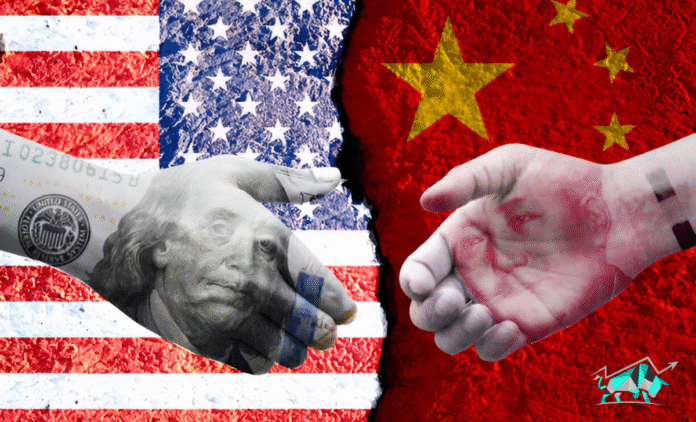US President Donald Trump has announced a new trade agreement with China after two days of intensive negotiations at Lancaster House in London. The deal revives the fragile truce agreed in Geneva last month, which unraveled amid disputes over China’s rare-earth exports and US export controls on tech.
Key Terms of the Framework
- Tariffs: The US will levy a combined 55% tariff on Chinese imports—composed of a baseline 10%, 20% targeted at fentanyl, and 25% from earlier tariffs. China will impose a 10% tariff on US imports.
- Rare-earths: China will provide critical minerals and magnets needed for industries including EVs, defence and electronics. Washington plans to ease some export controls on chips if China keeps its side of the bargain.
- Visa access: The US will continue hosting Chinese students.
- Approval: The deal is still pending final sign‑off from Trump and Xi Jinping.
US Treasury Secretary Scott Bessent termed the framework a chance for a “big, beautiful rebalancing of the world’s two largest economies” if China honours the Geneva agreement. Chinese Vice‑Minister Li Chenggang described the London discussions as “rational, in‑depth and candid” and said both sides would implement past agreements.
Investors showed mild optimism: China’s CSI 300 index rose 0.8%, and the S&P 500 gained around 0.1% following the announcement . Still, markets remain wary due to the lack of detailed implementation plans and ongoing legal scrutiny of Trump’s tariffs.
Read More: China to Fast-Track Rare Earth Exports to European Firms, Adds Strategic Leverage
What’s At Stake with Rare‑Earths
Rare earth elements are essential for clean-tech, electronics, and military hardware. China controls over 85–95% of global refining and has used export controls as a lever in past disputes. The current agreement helps avert immediate supply disruptions but doesn’t address long‑term dependency.
As Reuters columnist Clyde Russell observes, unless Western governments fund their own mining and processing networks, China’s leverage over critical materials remains.
This “framework” is a pragmatic move to stabilise markets and buy time, rather than a lasting resolution. The rare‑earths deal temporarily eases a critical pinch point, but China’s dominance in refining remains a strategic vulnerability for the US and its allies. Without serious investment in Western supply chains, these talks only postpone the next showdown.
On the tech front, the US must tread carefully: easing export controls for mutual gain is smart, but too much leniency may undermine broader national‑security goals. Speedy implementation and meaningful state support for alternative rare‑earth sources will determine whether this deal sustains or merely stalls tensions until the next crisis.
In short, London has afforded both sides a diplomatic pause. But unless politicians on both sides use that breathing space to tackle the structural imbalances head‑on, the next flare‑up is just around the corner.


